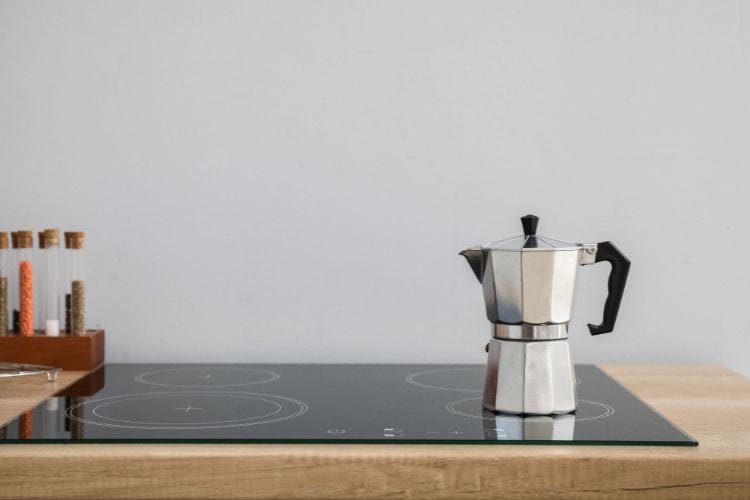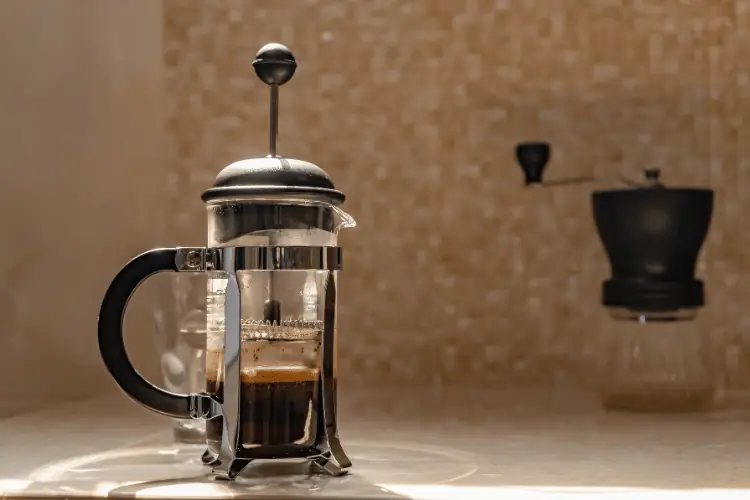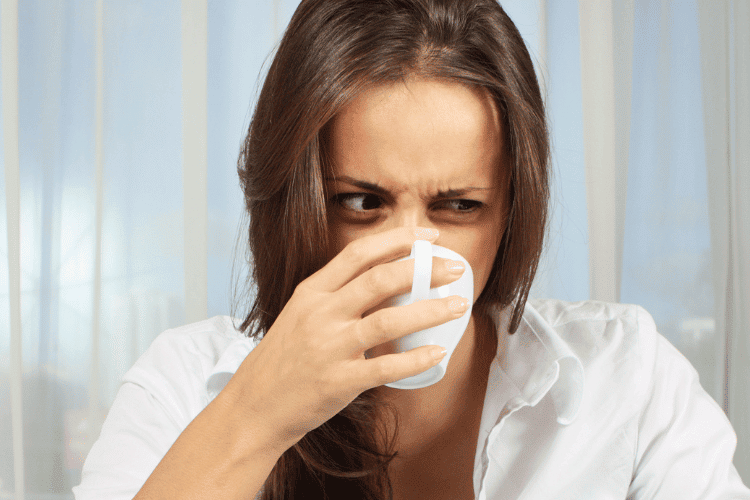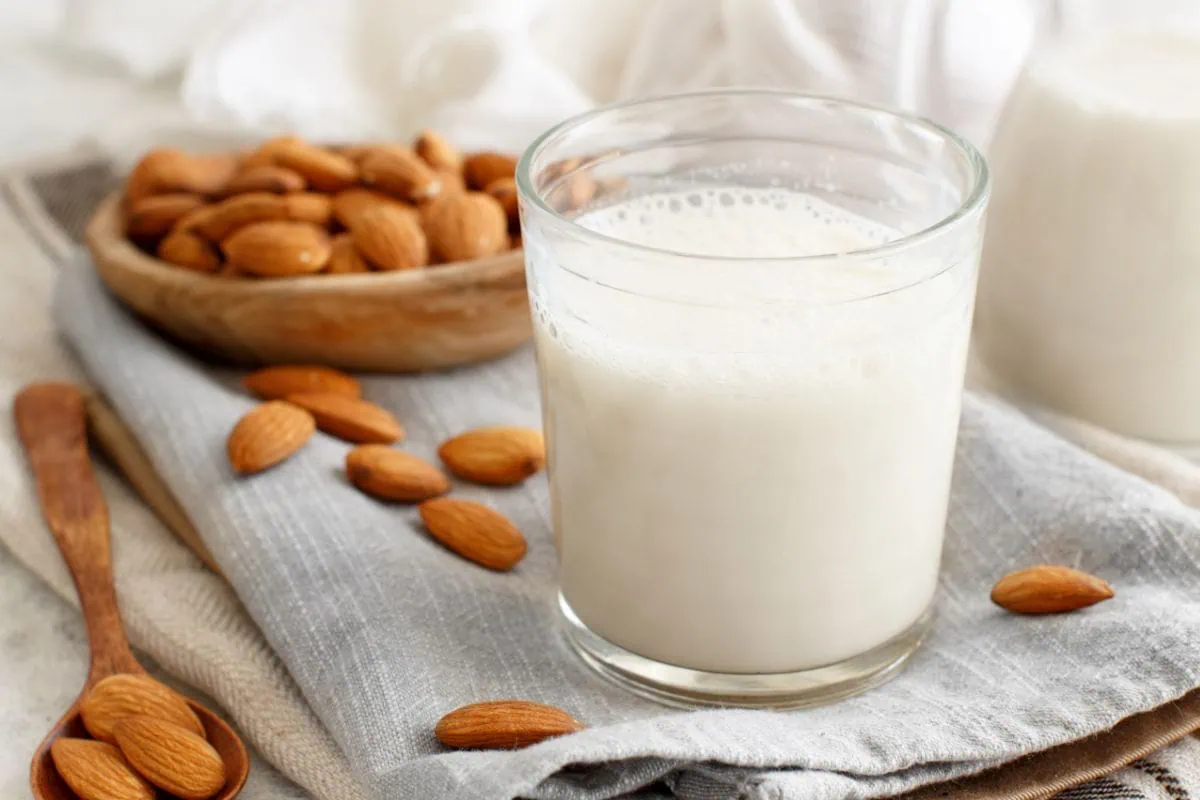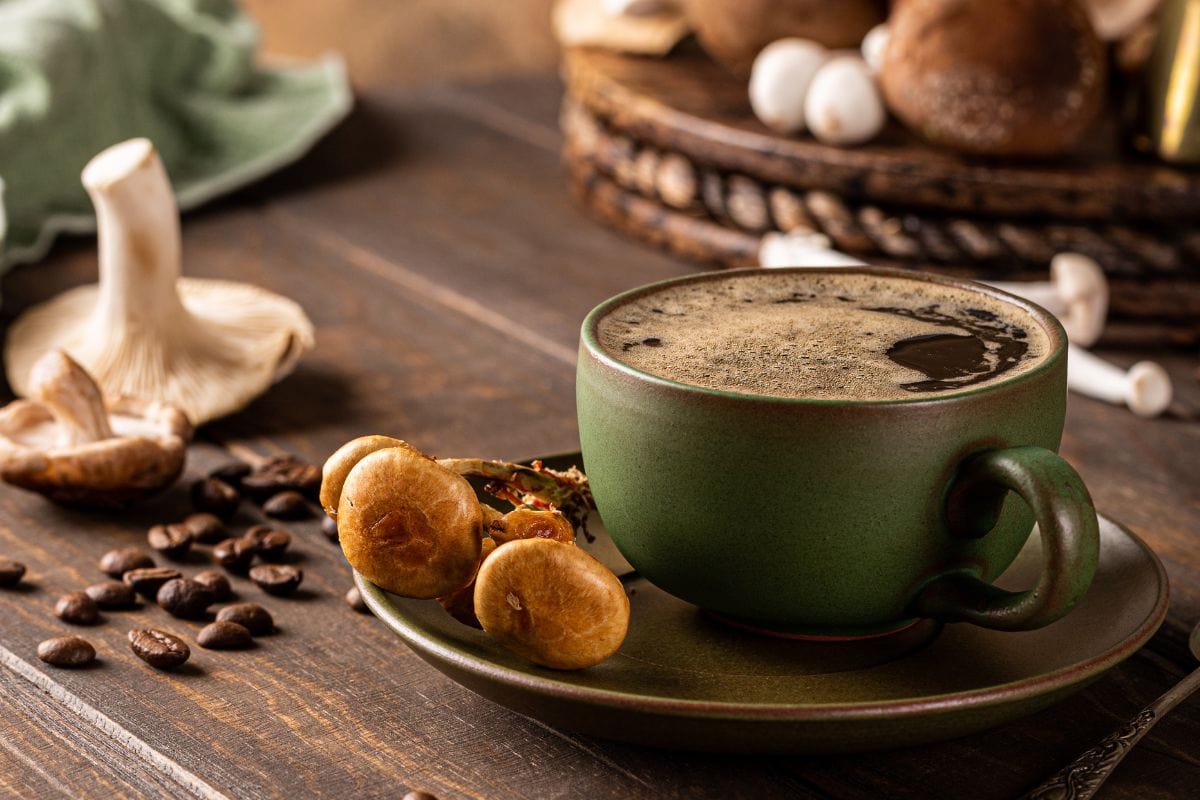The quest for the perfect cup of coffee often leads to various brewing methods and tools. Among these, the Moka Pot stands out as a classic stovetop coffee maker that has been cherished for generations.
However, as kitchen technology evolves, many coffee enthusiasts wonder whether it’s safe and practical to use a Moka Pot on an electric stove.
In this guide, we’ll explore the world of Moka Pots, their compatibility with electric stovetops, and provide you with step-by-step instructions for brewing the perfect cup of coffee.
What Are Moka Pots?
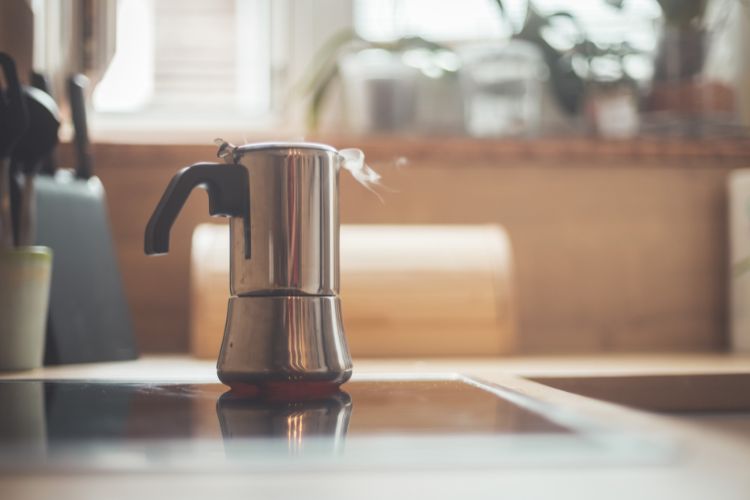
Moka Pots were invented in 1933 to provide a cost-effective alternative for making espresso-like coffee at home. These compact and stylish devices consist of several sections: a bottom chamber for water, a middle section for ground coffee, a filter, and an upper chamber.
The magic happens when an external heat source, typically from a stove, is applied to the base of the Moka Pot.
The water in the bottom chamber starts to boil, creating steam pressure that forces it to rise through the coffee grounds and filter, ultimately delivering a rich and flavorful coffee in the upper chamber.
Compatibility with Electric Stoves
Initially designed to be used on gas stovetops, Moka Pots have proven their adaptability by also working on electric stovetops. However, there are some nuances to consider.
Gas stovetops offer more control over temperature due to the open flame, which is ideal for the extraction process, allowing you to adjust the heat quickly.
On the other hand, electric stoves come with preset heat levels, making it somewhat challenging to maintain the precise temperature required for brewing. This difference can impact the taste of your coffee, potentially making it too acidic or bitter on an electric stove.
Modern induction stovetops, which use electromagnetic energy to heat cookware, unfortunately, do not work with traditional aluminum Moka Pots.
Nevertheless, some manufacturers like Bialetti have designed Moka Pots specifically for electric stovetops, using a thinner aluminum that is more susceptible to damage if overheated.
Therefore, it’s crucial to exercise caution and closely monitor the temperature when using an electric stove.
How to Brew Moka Pot Coffee on an Electric Stove: A Step-By-Step Guide
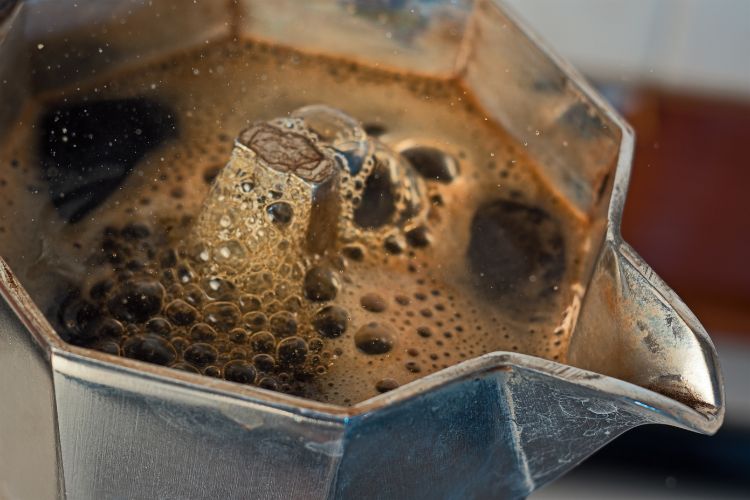
Now that we understand the compatibility of Moka Pots with electric stovetops, let’s dive into the brewing process. Here’s a detailed guide to help you make the perfect cup of coffee using your Moka Pot on an electric stove:
1. Prepare the Water
Begin by opening your Moka Pot and pouring hot water into the bottom chamber. Using filtered water is recommended, as it ensures there are no impurities that might affect the coffee’s taste.
2. Add Coffee Grounds
Remove the filter from the Moka Pot and pack the coffee grounds inside. Use a spoon to compact the grounds, ensuring they are level.
This step is crucial for achieving a consistent flavor in your coffee. While you can use various coffee grounds, it’s best to opt for an espresso roast.
3. Assemble the Moka Pot
Put all the Moka Pot’s components together, securing the filter in place.
4. Heat It Up
Turn your electric stove to medium heat and place the Moka Pot on the stovetop. The metal construction of the Moka Pot efficiently carries and distributes heat, so your coffee will start to brew in just a few minutes.
Listen for the telltale sound of steam escaping from the top of the Moka Pot; this is your cue to remove it from the heat. It’s essential to pay close attention at this stage, as leaving it on for too long can impact the coffee’s taste and make it bitter.
5. Pour and Enjoy
Once your Moka Pot has completed its brewing process, take it off the electric stove and pour the freshly brewed coffee directly into your cup.
Most Moka Pots are designed for single servings, but larger models are available. Customize your coffee with cream, sugar, or any other favorite additions, and savor the perfect cup of joe.
Why Are Gas Stoves Recommended?
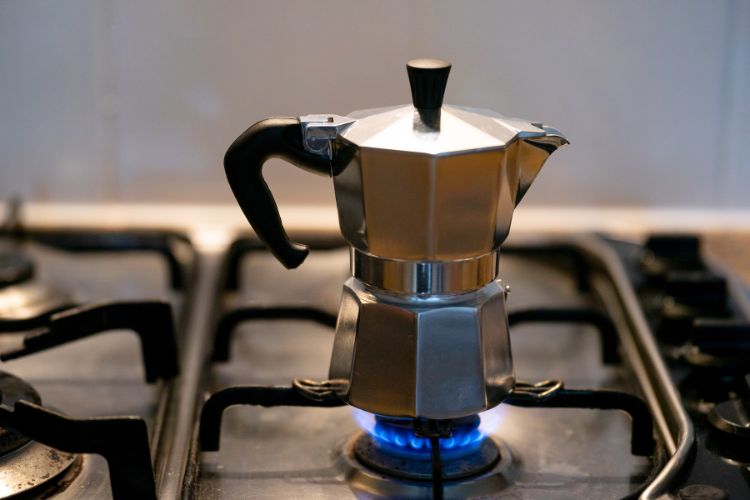
Gas stove tops are often recommended for Moka Pot brewing due to their ability to heat up quickly and provide more control over heat levels. The open flame allows for precise heat manipulation, resulting in an accurate brewing process.
While the type of stove doesn’t significantly impact the coffee’s taste, gas stoves make it easier to control the boiling speed, reducing the risk of over-extraction.
Electric vs. Induction Stovetops
Understanding your electric stove is essential. Electric cooktops, which use metal coils beneath the surface to heat cookware, might provide lower levels of heat and heat up more slowly, which could be seen as unsuitable for Moka Pot brewing.
However, it’s entirely possible to use them effectively with the right technique.
On the other hand, induction cooktops use electromagnetic energy to heat the cookware directly, but they require stainless steel Moka Pots as aluminum won’t conduct the heat
Using an induction converter disc is an alternative for those with aluminum Moka Pots who prefer induction stoves.
Conclusion
In conclusion, Moka Pots are versatile coffee makers that can be used on electric stoves, provided you take some precautions.
The simple mechanism of the Moka Pot makes it an excellent choice for brewing espresso-like coffee at home. While gas stove tops are recommended for their quick and precise heating, electric stoves can also deliver great results with the right approach.
Keep a close eye on your Moka Pot to avoid over-extraction and bitterness, and you’ll be able to enjoy a delightful cup of coffee every time. Remember to follow these simple steps, and your Moka Pot will become your go-to stovetop coffee maker for many future brews.




